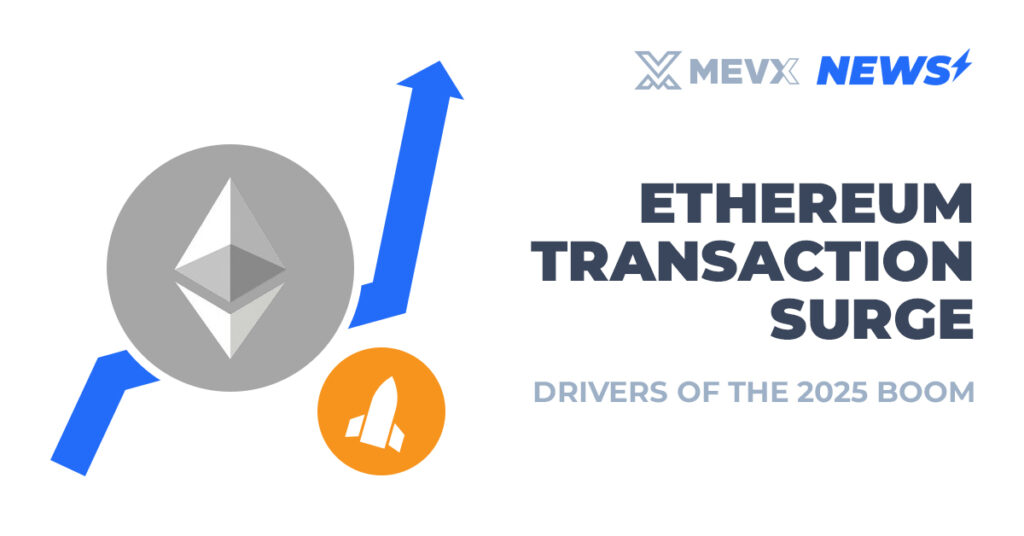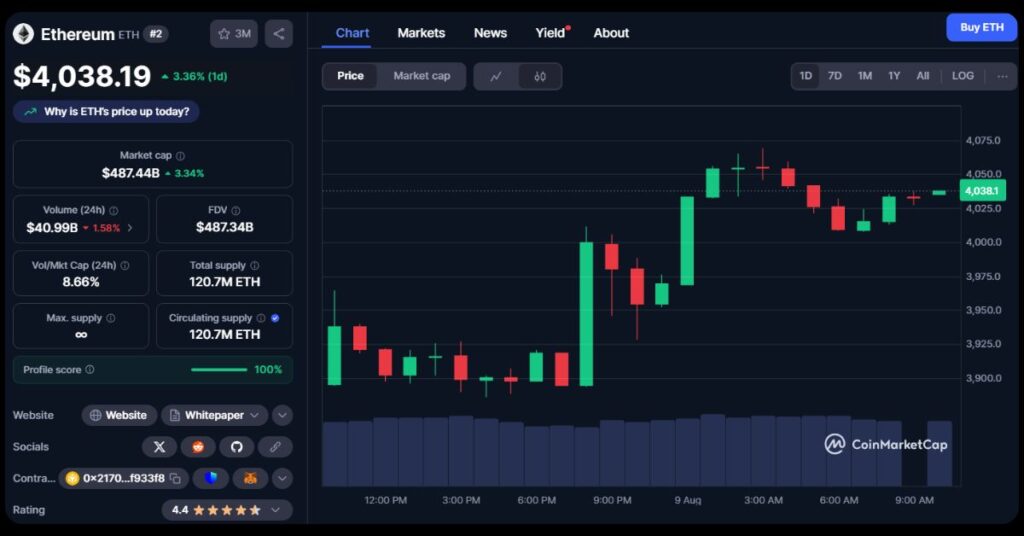As of August 9, 2025, the network’s daily transactions have soared to between 1.74 million and 1.88 million. This Ethereum transaction surge comes amid a price rally that pushed ETH above $3,900, narrowing the gap with rivals like Bitcoin and Solana. But what’s driving this momentum? Let’s dive into the details.

Key Drivers Behind the Ethereum Transaction Surge
The surge is rooted in a mix of technological advancements, regulatory wins, and growing institutional interest. Here’s a breakdown of the main factors:
- Booming DeFi and Stablecoin Activity: Increased use of decentralized finance protocols and stablecoins like USDT and USDC has spiked transaction volumes. Monthly figures hit 46.67 million in July, with active addresses climbing to 683,500.
- Staking Records and Yield Opportunities: Staked ETH has reached all-time highs, offering yields around 3-5%. This attracts users seeking passive income, further boosting network engagement.
- Regulatory Clarity from SEC: Recent SEC rulings confirming ETH isn’t a security have reduced uncertainty, encouraging more participation. This clarity, combined with the GENIUS Act, has paved the way for institutional inflows exceeding $4 billion in ETH ETFs during July alone.
- Technical Improvements: Upgrades like higher gas limits (up to 45M per block) allow for smoother, higher-volume processing, supporting everything from yield farming to tokenized real-world assets.

Treasury Holdings on the Rise
Parallel to the Ethereum transaction surge, corporate and institutional treasuries are piling into ETH. Companies view it as a hedge against inflation and a programmable asset with real utility.
Recent examples include over 500,000 ETH (worth $1.8 billion) added to stakes, pushing total holdings toward 10% of supply.
Firms like SharpLink and Cosmos Health have allocated hundreds of millions, treating ETH as “technology equity.” Updated accounting rules from FASB allow fair-value pricing, making it more appealing for balance sheets.
This Ethereum transaction surge reflects a maturing ecosystem, with ETH’s market cap surpassing traditional giants like Exxon Mobil at $460-470 billion. While optimism runs high, some analysts predict $10,000 by year-end, challenges like potential overleverage and centralization risks remain.
As the network evolves, it could redefine blockchain adoption.
Follow our MevX blog for daily insights and updates on crypto trends!
Share on Social Media:
